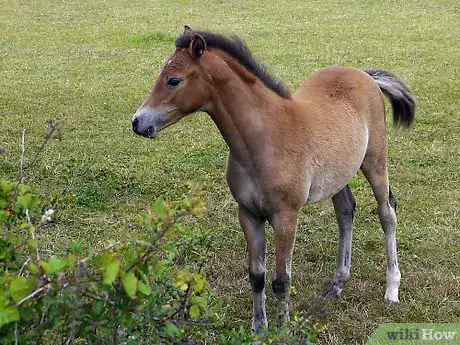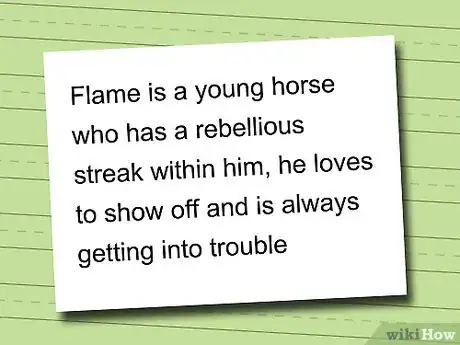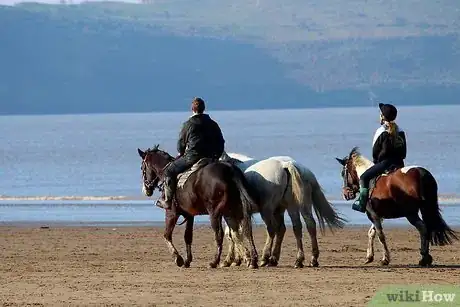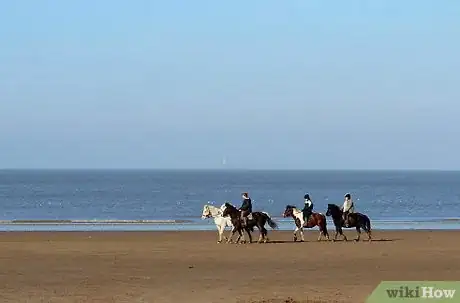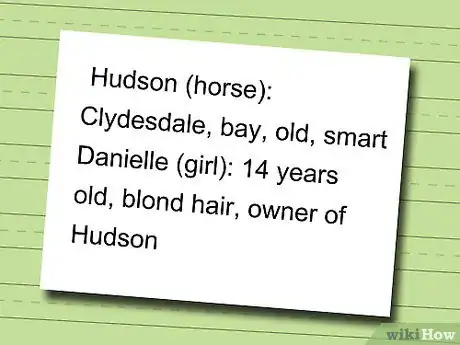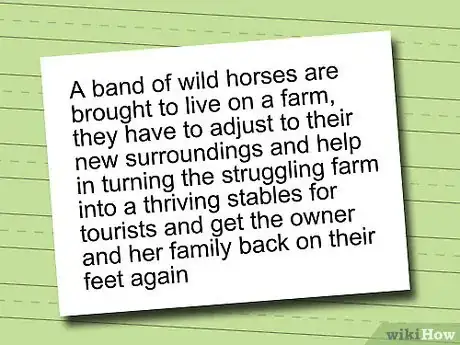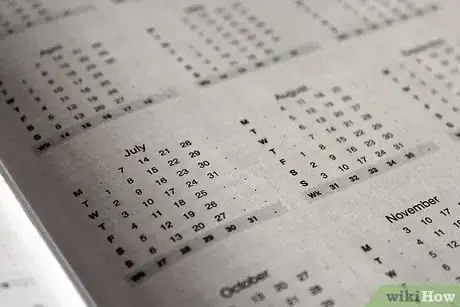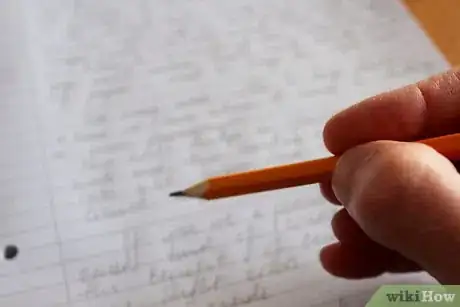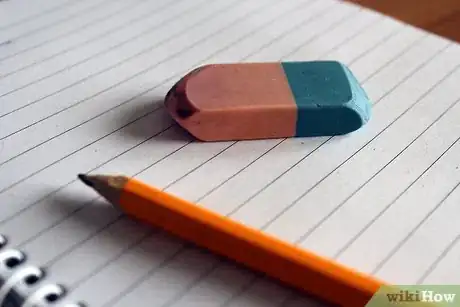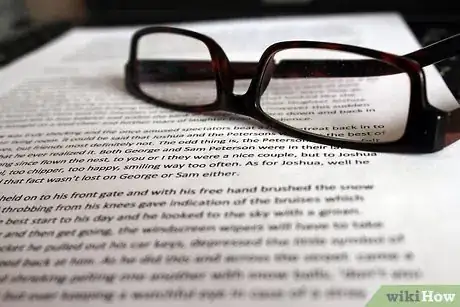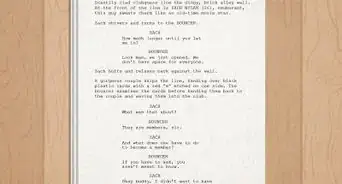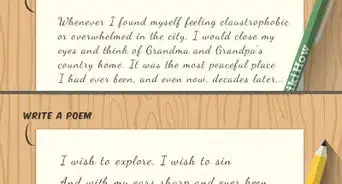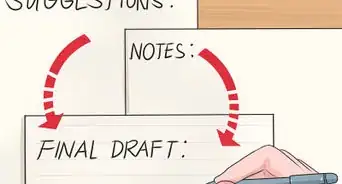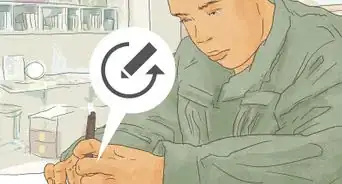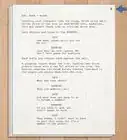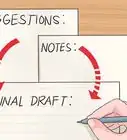X
wikiHow is a “wiki,” similar to Wikipedia, which means that many of our articles are co-written by multiple authors. To create this article, 21 people, some anonymous, worked to edit and improve it over time.
This article has been viewed 53,993 times.
Learn more...
Horses can make for a very interesting topic for a story. Many people are fascinated with these beautiful and expressive animals and many authors have chosen them as a subject for their works -- "Black Beauty" is a good example. Even for those who know little about these amazing creatures, horse stories are very exciting and fun to write.
Steps
-
1Learn about horses. If someone who knows a lot about horses reads your story, you want them to get the sense that you know what you're talking about. Read up on horses online and at your local library. If you can, spend some time observing real horses and interacting with them. If you can't get to a place with live horses, watch videos with horses to get a sense of how they move and behave. You should know some horse words such as hand, furlong, martingale, etc, and something about horse colors and breeds.
-
2Choose the horses for your story and their personalities. The names can say something about the horse's character. For example, a horse named "Flame" might be wild and rebellious, maybe a stallion, and likely bay or chestnut colored. Think about why the horses in your story act the way they do. What were they like when they were young? Who were their parents? How do they act around people? Around other horses? How do people or other horses perceive them? Try to have horses in your story with a variety of different personalities. No one wants to read about a bunch of horses who all act the same. Try to make your horses stand out from the "herd".Advertisement
-
3Choose your human characters. While humans are not always essential in a story about horses, they are frequently present. They should be just as fully developed as characters as the horses are. Since your story is going to focus on horses, think about how your human characters react to them. Does the person have a favorite horse? A least favorite horse? Is she an experienced rider or a novice? Did she grow up around horses or did she live in the city until now?
-
4Pick a setting for your story. Obviously, your setting will be determined by the kind of story you write. It can be a stable, a farm, a riding school, the wild plains, a secluded wilderness island, or just about anywhere you might find horses. Get as specific as you can. What other animals live on the farm? Cows? Pigs? Emus? How many horses are at the riding school and how many people attend it? Does your setting have secluded trails through the woods or wide open space as far as the eye can see?
-
5Do some prewriting. List the characters, both horse and human, as well as the setting, and some specific details about them. For example:
- Hudson (horse): Clydesdale, bay, old, smart
- Danielle (girl): 14 years old, blond hair, owner of Hudson
- Start to think about how the different characters may react to each other and what conflicts might emerge. You may also want to draw pictures to help you visualize the story.
-
6Think about the main conflict in your story. Some possible conflicts include:
- An orphaned foal struggles to survive in the wild.
- A band of wild horses are brought to live on a farm.
- A horse is purchased by a cruel owner.
- An old horse and a young rider must learn to work together.
- A group of people acquire a wild horse and try to tame it.
-
7Decide on events for your story. The events should relate to the main conflict in your story. For example, if we have a story about wild horses coming to live on a farm, some events that could happen are:
- A headstrong mare gets loose and runs away.
- The foals like the humans, but worry about losing the respect of the lead stallion.
- The humans try to ride one of the horses for the first time.
- The horses confront the emus over their grain greediness.
- One of the horses is ill and the humans must nurse him back to health.
-
8List some events and put them in order. Write some notes about each one you will include.
-
9Write a rough draft. Keep in mind that you are still in the planning stage, and this is not the final copy. Don't worry about spelling and punctuation yet.
-
10Edit the rough draft with a pen or pencil. Correct spelling, punctuation, grammar, and any other errors you made. it may help to use a bright color so you can see what you changed.
-
11Complete the final copy. You may wish to type it, or you can simply write the story on paper.
Advertisement
Community Q&A
-
QuestionHow do I come up with an interesting plot?
 Community AnswerThink about what you would find interesting, and pursue that. If it excites you, it's bound to excite others as well.
Community AnswerThink about what you would find interesting, and pursue that. If it excites you, it's bound to excite others as well. -
QuestionCan I write a story about wild horses?
 Community AnswerYes, of course! A story about wild horses is a great idea.
Community AnswerYes, of course! A story about wild horses is a great idea. -
QuestionHow do I start writing the story? I'm stuck on starting the actual writing part.
 DonaganTop AnswererThat's not an unusual problem: getting started is often the hardest part of writing a story. The thing to do is simply write anything! It doesn't have to be good: you can change it later. Once you begin typing or writing words -- any words at all -- your mind will think of more words, and you'll find yourself creating a narrative, which you can gradually mold into the story you want to tell.
DonaganTop AnswererThat's not an unusual problem: getting started is often the hardest part of writing a story. The thing to do is simply write anything! It doesn't have to be good: you can change it later. Once you begin typing or writing words -- any words at all -- your mind will think of more words, and you'll find yourself creating a narrative, which you can gradually mold into the story you want to tell.
Advertisement
About This Article
Advertisement
